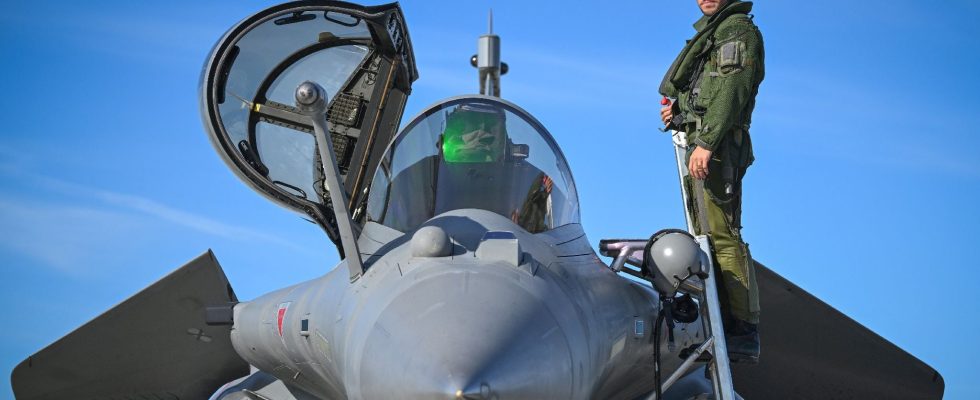With an increase of almost 50% in its exports between 2014-2018 and 2019-2023, France has risen to second place among the world’s arms exporters. This is what a report from the Stockholm International Peace Research Institute (Sipri) published this Monday March 11.
“France is taking advantage of strong global demand to boost its arms industry through exports,” observes Katarina Djokic, researcher at Sipri, who notes that Paris has “particularly succeeded in selling its combat aircraft outside Europe” .
Sharp decline in Russian exports
A first for France which is ahead of Russia, demoted to third position. And for good reason: between the two five-year periods evaluated, Moscow’s exports fell by 53%. A sharp decline which is reflected both in volume and in the number of importing countries. In 2019, thirty-one countries imported weapons from Russia. In 2023, there were only twelve left.
Furthermore, Russia’s share in the total imports of its customers also recorded a sharp decrease. India, which is still the largest importer of arms in the world today, is the glaring example. Because although Russia remains its main supplier, 2019-2023 is “the first five-year period since 1960-1964 during which deliveries from Russia, or the Soviet Union before 1991, (represented) less than half of arms imports into India,” the report notes.
In addition, Russia is suffering “from significant changes in the policies (put in place) by their main client, China”, explains Katarina Djokic for AFP. And for good reason: if Beijing still represents 21% of Russian exports today, the Middle Kingdom is focusing above all on the development of its own arms production. This suggests a short and medium term decrease in Chinese imports from Russia.
War in Ukraine, a real “game changer”
Obviously, the Russian-Ukrainian conflict has considerably reshuffled the cards. Over the past five years, kyiv has become the largest European arms importer, and the fourth largest in the world. A jump which thus explains the doubling of arms imports into Europe over the same period, with an increase reaching 94% compared to 2014-2018.
It must be said that since February 2022, no less than thirty countries have provided military aid to Ukraine. First and foremost, the United States, whose share of arms imports to the Old Continent continues to increase. Over the last five years, 55% of weapons imported by European states came from the United States, compared to 35% over the period 2014-2018.
For Dan Smith, director of Sipri, several reasons explain this preference of European NATO member states for the United States. First of all, there is the concern to maintain transatlantic relations. Then come the “more technical, military and cost-related” questions, he explains. Most European countries are partners in the development of military equipment, like the F-35 fighter plane, adds Katarina Djokic to our colleagues at AFP.
The United States, world leader
It is therefore no surprise that over the last five years, arms exports have increased by 17% across the Atlantic. An increase which allows Washington to maintain its leading position in the global arms market. “Their share in total world arms exports notably increased from 34% to 42%” between the two periods examined.
“The United States has increased its role as a global arms supplier – an important aspect of its foreign policy – by exporting more weapons to more countries than ever before,” said Mathew George. , director of the Sipri “Arms Transfers” program. “This is happening at a time when America’s economic and geopolitical dominance is being challenged by emerging powers.”
Even more so since Washington assumed the role of primary arms supplier to Israel, entangled in a war against Hamas since the attack on October 7. “We see in some European states pressure from different actors or states to limit the supply of weapons to Israel as part of its (military) operations in Gaza due to potential violations of international humanitarian law,” assures Zain Hussain, researcher at Sipri.
In the midst of the American presidential campaign, the White House’s support for Israel, described by many observers as “unconditional”, was particularly viewed negatively by part of the Democratic electorate. So much so that Joe Biden was forced to toughen his tone. The American president said on Saturday that Benjamin Netanyahu was “doing more harm than good to Israel” through his conduct of the war in Gaza.
